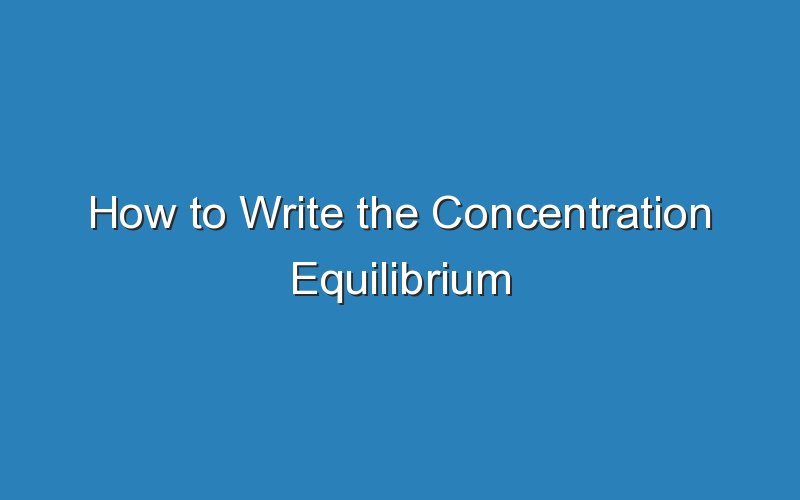The concentration equilibrium constant is the ratio of the reactant and product concentrations. It is also known as the ‘Equilibrium Constant’. It is the same as the equation for the ‘Equilibrium of the System’. A value of k less than 10-3 means that the ratio of reactants to products is very small at equilibrium. This indicates that the reaction favors the formation of reactants rather than the products.
An equilibrium constant expression is an arithmetic product of the product and reactant concentrations raised to the stoichiometric coefficients. A large value of the ‘Equilibrium Constant’ indicates that products are more abundant than reactants in the reaction. The ‘Equilibrium Constant’ of a reaction is written as ‘ef15.2.7’.
The concentration equilibrium constant expression for this reaction can be written as a rate equation for two systems. The simplest way to do this is to represent the system at equilibrium as three identical containers of equal volume. In the following diagrams, hno2+(aq) and oh? (l) are at equilibrium. Once you have calculated the ‘Equilibrium Constant’, you can then write the concentration equilibrium constant expression for this reaction in the form of an equation.
In addition to a rate expression, the concentration equilibrium constant is another essential formula to write the equation for this reaction. Usually, the equilibrium constant is equal to the ratio of the forward and reverse rates of the reactions. If we take the inverse of the original rate, we have the ‘Equilibrium Constant’. However, if we look at the opposite side of the equation, we will find that the H_2O_(g) is at a high-concentration state.
In general, an equilibrium constant is defined as the rate constant of the reaction. For example, a water molecule will be formed in a solution by combining two molecules of water and O_2 (g). This result is an example of a chemical process called a reverse-stoichiometry. The rate of the initial and final reactant is the same as for the final product.
The concentration equilibrium constant expression for this reaction is written as ef15.2.7. A large value of ef15.2.7 indicates a strong tendency to form products. As it is written, the equilibrium is in the right direction. Consequently, the product is higher than the reactant, which indicates that it is a chemical-reaction that has a large equilibrium constant. For the reverse ef15.2.7 is the product of two molecules.
The concentration equilibrium constant expression for this reaction. Hence, the solution of the reaction is produced in an identical manner. The resulting solution is a mixture of two gases. Therefore, the equilibrium constant expression for this reaction is the product of a gas. The product will produce water. Then, it will give rise to a solid. So, the equilibrium constant for this reaction is the product of the forward-reaction and the reverse-reaction rate.
The concentration equilibrium constant expression for this reaction. Once you have a clear idea of the composition of the products, you can write the concentration equilibrium constant expression for this reaction using the law of mass action. The law of mass action describes the concentration equilibrium for a system of gases. If two reactants are present in one or more of the components, then the concentrations of both substances are equivalent. The solution has an equilibrium value when the product and the reactant are in the same proportion.
If you are unsure of the equilibrium constant of the reactant, you can use the concentration equilibrium constant expression for the reaction. For each reaction, the concentration of the product is equal to the product’s concentration. The corresponding product will contain a small amount of the product at equilibrium. The products of the reaction will be in the form of a mixture. So, you can calculate the EC of the reactant and the solvent are the same.

